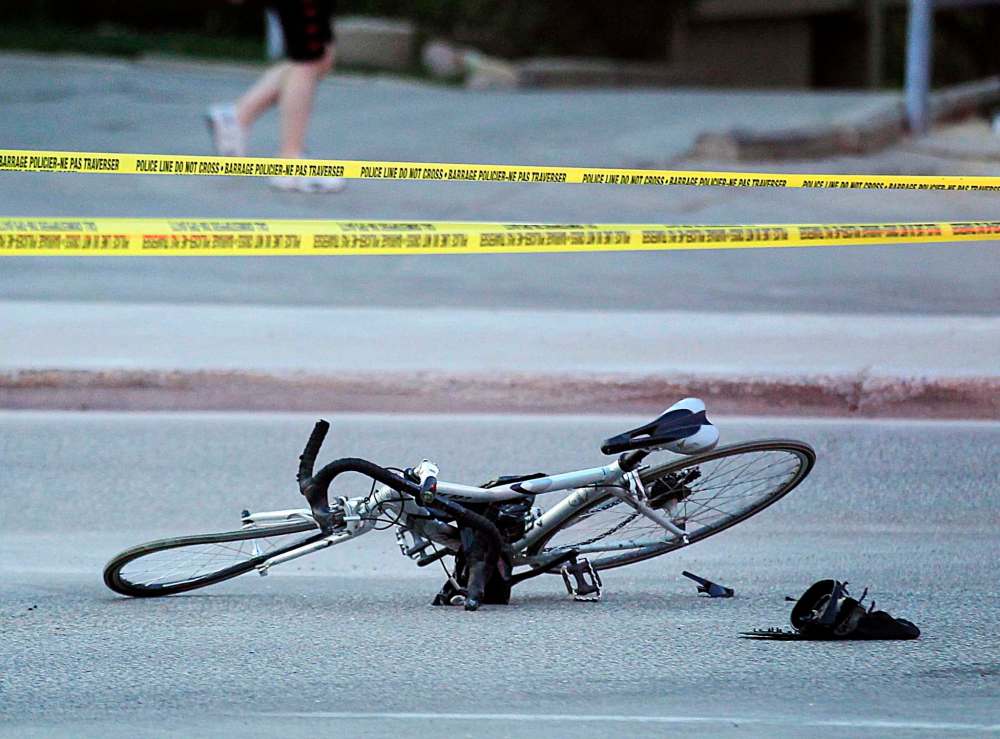MPI issues alert as annual pedestrian fatality number nears record pace
Advertisement
Read this article for free:
or
Already have an account? Log in here »
To continue reading, please subscribe:
Monthly Digital Subscription
$0 for the first 4 weeks*
- Enjoy unlimited reading on winnipegfreepress.com
- Read the E-Edition, our digital replica newspaper
- Access News Break, our award-winning app
- Play interactive puzzles
*No charge for 4 weeks then price increases to the regular rate of $19.00 plus GST every four weeks. Offer available to new and qualified returning subscribers only. Cancel any time.
Monthly Digital Subscription
$4.75/week*
- Enjoy unlimited reading on winnipegfreepress.com
- Read the E-Edition, our digital replica newspaper
- Access News Break, our award-winning app
- Play interactive puzzles
*Billed as $19 plus GST every four weeks. Cancel any time.
To continue reading, please subscribe:
Add Free Press access to your Brandon Sun subscription for only an additional
$1 for the first 4 weeks*
*Your next subscription payment will increase by $1.00 and you will be charged $16.99 plus GST for four weeks. After four weeks, your payment will increase to $23.99 plus GST every four weeks.
Read unlimited articles for free today:
or
Already have an account? Log in here »
Hey there, time traveller!
This article was published 24/09/2019 (2250 days ago), so information in it may no longer be current.
Manitoba Public Insurance is warning pedestrians and motorists alike to stay alert on the roads, as this year’s pedestrian fatality count approaches a record high.
There have been 12 pedestrian deaths on public roadways in Manitoba thus far in 2019 — the same number as the annual average over the last five years, and the highest nine-month count in the last 20.
“This isn’t about pointing the finger of blame, this is all about raising road safety awareness so both (pedestrians and motorists) can use the road safely and get home safe,” MPI spokesman Brian Smiley said Tuesday.

A total of 972 pedestrians were involved in incidents — 147 of which resulted in serious injuries, while 68 were fatal — in 2013-18. The record-high of 16 pedestrian fatalities during a single year occurred in 2007.
Historic data indicates about half of all pedestrian deaths occur at an intersection. One in 10 deaths take place either between intersections or when a pedestrian is walking on a roadway.
Smiley said while MPI notes bumps in statistics during January and February, when roads are covered in ice, and in July and August, when pedestrians are out and about in the warm weather, collisions involving pedestrians are a year-round concern.
Last year, MPI launched “Save the 100,” a road safety campaign with the same premise as the Vision Zero strategy. “One fatality is far too many,” Smiley said.
A road safety strategy born in Sweden in the 1990s, Vision Zero seeks to eliminate all traffic fatalities and severe injuries, while simultaneously making a city safer and accessible for all residents and visitors to navigate. Similarly, Towards Zero (fatalities) is a traffic safety approach that recognizes pedestrian deaths are preventable while driver error is unavoidable, so traffic infrastructure must be forgiving of that.
The City of Winnipeg has adopted the latter. It’s currently seeking applications for a $275,000 contract to develop a five-years-and-beyond plan to assess road safety. The deadline for applications is Oct. 8.
Meanwhile, next week, world-renowned experts in the field of traffic safety will be in Winnipeg for the second annual Mode Shift festival, five days of events centred around transportation, culture and health, to talk about ways the city can mimic the successes seen in other parts of the world (such as Amsterdam).
The Forks is hosting a Vision Zero panel discussion Oct. 1.
“We need to undo some of the endemic issues we have with the built environment by investing heavily in things like traffic calming, upgraded crosswalks, changing laws around speed limits,” said Anders Swanson, the program director at Mode Shift 2019, which is being organized by the Winnipeg Trails Association.
Swanson is in favour of a policy on the table at city hall to lower the standard residential speed limit in Winnipeg to 30 km/h from 50 km/h. “If we design a city that’s intended to move machines around as quickly as possible, we have a city that’s not worth living in,” he said.
Smiley agreed, noting the chance of survival after being hit by a car going 50 km/h or less is much higher than otherwise.
A future with zero annual fatalities, he said, must involve a number of partners, with municipalities and law enforcement at the forefront. More traffic circles, speed reducing bumps and jaywalking tickets could improve safety, Smiley added.
maggie.macintosh@freepress.mb.ca
Twitter: @macintoshmaggie

Maggie Macintosh
Education reporter
Maggie Macintosh reports on education for the Free Press. Originally from Hamilton, Ont., she first reported for the Free Press in 2017. Read more about Maggie.
Funding for the Free Press education reporter comes from the Government of Canada through the Local Journalism Initiative.
Every piece of reporting Maggie produces is reviewed by an editing team before it is posted online or published in print — part of the Free Press‘s tradition, since 1872, of producing reliable independent journalism. Read more about Free Press’s history and mandate, and learn how our newsroom operates.
Our newsroom depends on a growing audience of readers to power our journalism. If you are not a paid reader, please consider becoming a subscriber.
Our newsroom depends on its audience of readers to power our journalism. Thank you for your support.

